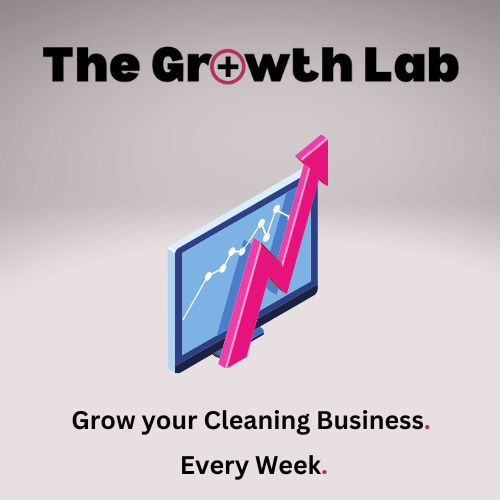I spent 4 hours writing two new cold email sequences yesterday.
One has a 9 email sequence, the other a 7 email sequence.
Both are part of a new campaign that I’m running at The Growth Lab.
We’re targeting MD’s of UK commercial cleaning businesses with £0.5m-£5m annual revenue without a sales team.
When I sit down to write the first email, I like to go back to basics.
Agenda
Subject Lines
Line 1: Personalisation
Line 2: Offer
Line 3: Call To Action
Two Examples
1. Subject Lines
I’ve learned that you need to make the subject line relevant to the prospect.
Understanding your ideal client and the having a key decision maker avatar help with this.
I know that the MD’s I’m targeting struggle with generating new business.
The subject line I’m using is….. “new business”
It’s:
Short - Use no more than 4 words according to Salesloft data);
Lower case to avoid looking like a marketing email; and
Opens a curiosity gap. I’m enticing the prospect to open without giving much away.
2. Line 1: Personalisation
Two things to bear in mind with your first line:
You want to encourage the reader to open your email from the first line; and
Give them context as to why you’re reaching out.
The first line of your email is almost as important as the subject line. It’s the line that’s visible in your inbox without having to open the email.
That’s why you need to show that you know your prospect and create more curiosity for them to read the rest of your email.
I’ve take two approaches with the current campaign.
I’m running one sequence with hyper-personalised first lines that have been scrapped from LinkedIn.
With the other sequences, I’m using more general context that is still relevant to the reader by referring to the MD as “the owner-operator responsible for sales”.
3. Line 2: Offer
Your offer has to resonate with your prospect.
What pain points does the prospect you’re emailing care about?
What’s the big problem that your offer is solving?
In my case, the pain point is not generating new business consistently.
My offer helps owner-operators automate their outbound prospecting to book new appointments every month for contract opportunities.
I only reference one pain point per email to keep it short and concise.
4. Line 3: CTA
You want to finish your email with a strong call to action.
Consider your audience. Don’t ask them to schedule anything in this first email.
People are busy and this creates too much friction. You want to make it as easy as possible for your prospects to respond.
Interest based CTA’s like, “Worth a chat?” or “Open to exploring this?” work much better than “Do you have time at 1pm on Tuesday?”.
Keep it simple.
5. Two Examples
Here are the opening emails I wrote both sequences yesterday.
The key to writing a good cold email is:
Keeping it short and relevant with a unique offer
Making it contextual to the person reading it; and
Having a clear next step
Content to check out
I’ve found The Practical Prospecting podcast really useful for improving my cold email writing game. Check it out here.
In this week’s episode of The Growth Lab podcast, I have break down the 5 tips I learned from my interview with Josh Melton about using relationship marketing to grow your cleaning business. Listen here.
Prefer watching over listening? Check out The Growth Lab podcast on YouTube.
Need More Help?
If you’re struggling to generate sales leads that grow your cleaning business, I offer help in 3 ways:
Email me with your current prospecting strategy. The more detailed you provide, the more personal I can make my response.
Get manually verified, hyper-personalised B2B contact lists for your cleaning business delivered straight to your inbox - within 48 hours.
Turn 100% cold prospects into 5-10 sales leads and booked appointments every month for your commercial cleaning business.
Thanks for reading!
Matt @ The Growth Lab
Was this email forwarded to you? Subscribe here:
Thanks for subscribing to The Growth Lab.








